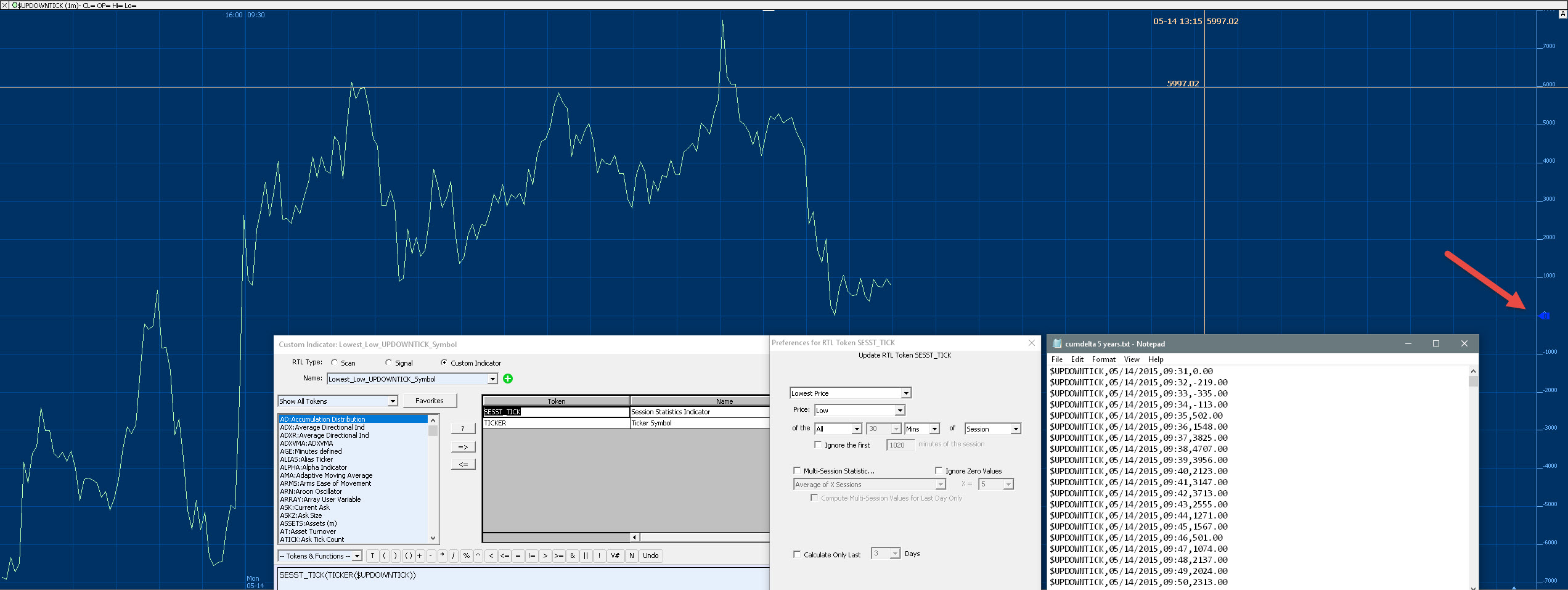I was given an ES cumulative delta export based on 1 minute data for ES for a long period (5+ years).
I am not sure if I can merge it with ES so I made a new custom symbol and imported the data. Everything is showing fine however I am not able to apply a SESST indicator on it. Is that because of the type of data or am I doing something wrong?
On the screenshot you can see how the data looked and how I set up the indicator to get the lowest price of the day.
Red arrow shows the SESST indicator at zero instead of showing the low of day.



You can just use SESST by itself (or even add Session Stasticis directly to the chart). I'm not sure why you are putting that TICKER() syntax in there. Not needed.
Because I will be comparing it with another symbol.
So for example SESST_ES(TICKER(EPM8)) > SESST_ES.1(TICKER(EPM8)) AND SESST_OTHER(TICKER(OTHER)) < SESST_OTHER.1(TICKER(OTHER))
If I don't specify the symbol how else can I compare 2 different instruments?
To be specific I want to see a divergence between these two symbols, same thing as I would have done a divergence between ES and Delta.
You want to use CL in place of TICKER. TICKER gives you the ticker symbol (text). CL will give you the close price of each bar.
CL(EPM8)
etc....
I actually prefer just using MPD instead.
OK so if I wanted to check for: $OTHER is at low of day and ES is not:
SESST(MPD_ES) > SESST.1(MPD_ES) AND SESST(MPD_$OTHER) < SESST.1(MPD_$OTHER)
Set SESST to lowest low of the session, MPD_ES set to EPM8, MPD_$OTHER set to $OTHER
Would this work?
Instead of SESST(MPD_ES), just use MPD_ES, and choose "Indicator > Session Statistics" inside of MPD. Same for MPD_OTHER. Then can use MPD_ES.1, MPD_OTHER.1, etc...